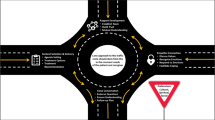Abstract
The physician-patient relationship has critical importance in the quality of medical care, especially in the oncology setting. Of particular interest over the past two decades has been the communication between physicians and their patients. It is understood that communication is related to patient and physician satisfaction as well as other medical outcomes. However, despite this interest and attention, investigators have only recently begun to assess the communication between physicians and patients from the patient's point of view. Additionally, previous investigations have primarily relied upon retrospective reports of the interaction from patients or physicians. The current investigation assessed physician–patient communication in an oncology setting, both as it was occurring and following the interaction. The units of analysis included participant ratings as well as those of trained observers. Findings revealed that physicians and patients disagree as to the valence of the messages which transpired. Additionally, results suggest that it is the patients who distort the messages in the positive direction. Research and clinical implications of this disagreement and positivity bias are discussed.
Similar content being viewed by others
REFERENCES
Baucom, D. H., & Adams, A. (1987). Assessing communication in marital interaction. In K. D. O'Leary (Ed.). Assessment of marital discord (pp. 139–181). NY: Lawrence Erlbaum Associates.
Baucom, D. H., & Epstein, N. (1990). Cognitive-behavioral marital therapy. New York: Brunner/Mazel.
Beckman, H., Kaplan, S. H., & Frankel, R. (1989). Outcome based research on doctor-patient communication: A review. In M. Stewart & Roter, D. (Eds.). Communicating with medical patients (pp. 223–227).
Bernheim, J. L., Ledure, G., Souris, M., & Razavi, D. (1987). Differences in perception of disease and treatment between cancer patients and their physicians. In N. K. Aaronson & J. Beckmann (Eds.), The quality of life of cancer patients. New York: Raven Press.
Blanchard, C. G., Labrecque, M. S., Ruckdeschel, J. C., & Blanchard, E. B. (1988). Information and decision-making preferences of hospitalized adult cancer patients. Social Science and Medicine, 27, 1139.
Cassileth, B. R., Volckman, B. A., & Goodman, R. L. (1980). The effect of experience on radiation therapy patients' desire for information. International Journal of Radiation Oncology, 6, 491–496.
Castejon, J., Lopez-Roig, S., Pastor, M. A., Pico, C., Reig, M. T., Rodriguez-Marin, J., & Terol, C. (1993). Cancer patients: health information and quality of life. In The 7th Conference of the European Health Psychology Society, abstract.
Chaitchik, S., Kreitler, S., Shaked, S., Schwartz, II, & Rosin, R. Doctor-patient communication in a cancer ward. Journal of Cancer Education, 7, 41.
Epstein, R. M., Campbell, T. L., Cohen-Cole, S. A., McWhinney, I. R., & Smilkstein, G. (1993). Perspectives on patient-doctor communication. Journal of Family Practice, 37, 377–388.
Fallowfield, L., Ford, S., & Lewis, S. (1995). No news is not good news: Information preferences of patients with cancer. Psycho-oncology, 4, 197–202.
Floyd, F., & Markman, H. (1983). Observational biases in spouse observation: Toward a cognitive/behavioral model of marriage. Journal of Consulting and Clinical Psychology, 51, 450–457.
Ford, S., Fallowfield, L., & Lewis, S. (1996). Doctor-patient interactions in oncology. Social Science and Medicine, 42, 1511–1519.
Gottman, J., & Krokoff, L. (1989). Marital interaction and satisfaction: A longitudinal view. Journal of Consulting and clinical Psychology, 57, 47–52.
Kai, I., Ohi, G., Yano, E., Kobayashi, Y., Miyama, T., Niino, N., & Naka, K (1993). Communication between patients and physicians about terminal care: A survey in Japan. Social Science and Medicine, 36, 1151–1159.
Ley, P. (1988). Communicating with patients. Improving communication, satisfaction and compliance. London: Chapman and Hall.
Makoul, G., Arntson, P., & Schofield, T. (1995). health promotion in primary care: physician-patient communication and decision making about prescription medications. Social Science and Medicine, 41, 1241–1254.
Markman, H. J. (1984). The longitudinal study of couples' interactions: Implications for understanding and predicting the development of marital distress. In N. Jacobson & K. Hahlweg (Eds.), Marital Interaction: Analysis and Modification. New York: Guilford Press.
Molleman, E., Krabbendam, P. J., & Annyas, A. A. (1984). The significance of the doctor-patient relationship in coping with cancer. Social Science and Medicine, 18, 475.
Notarious, C. I., & Markman, H. J. (1981). The Couples' Interaction Scoring System. In E. E. Filsinger & R. A. Lewis (Eds.), Assessing marriage: New behavioral approaches (pp. 112–127). Beverly Hills, CA: Sage.
Ong, L. M. L., DeHaes, J. C. J., Hoos, A. M., & Lammes, F. B. (1995). Doctor-patient communication: A review of the literature. Social Science and Medicine, 40, 903–918.
Rowland-Morin, R. A., & Carroll, J. G. (1990). Verbal communication skills and patient satisfaction. A study of doctor-patient interviews. Evaluation and the Health Professions, 13, 168–185.
Sher, T. G., Cella, D., Serafian, B., & Leslie, W. (1993). An old procedure with a new population: The use of the communication box in a medical setting. Behavior Therapist, 248–250.
Tattersall, M. H. N., Butow, P. N., Griffin, A. M., & Dunn, S. M. (1994). The take-home message: patients prefer consultation audiotapes to summary letters. Journal of Clinical Oncology, 12, 1305–1311.
Waitzkin, H. (1984). Doctor-patient communication: Clinical implications of social scientific research. Journal of the American Medical Association, 252, 2441.
Author information
Authors and Affiliations
Rights and permissions
About this article
Cite this article
Sher, T.G., Cella, D., Leslie, W.T. et al. Communication Differences Between Physicians and Their Patients in an Oncology Setting. Journal of Clinical Psychology in Medical Settings 4, 281–293 (1997). https://doi.org/10.1023/A:1026285315454
Issue Date:
DOI: https://doi.org/10.1023/A:1026285315454




